Architects & Firms
“I’ll build you a hall that rings like a violin,” said the great Auguste Perret to the pianist Alfred Cortot, an ambition that Italian architect Giorgio Palù of Arkpabi Architecture Studio no doubt had in mind when imagining his very first concert hall 15 or so years ago. Commissioned as part of the Museo del Violino he designed for his birthplace, Cremona—famed for its violin-making, the Lombard town counts both Andrea Guarneri and Antonio Stradivari among its illustrious tradition of luthiers—the intimate Auditorium Giovanni Arvedi (installed inside a 1941 building by Carlo Cocchia) caught the attention of many in the music world upon its 2013 inauguration. Among them were the directors of Stockholm’s Lilla Akademien, who approached Palù and his acoustician—Yasuhisa Toyota of famed Japanese firm Nagata Acoustics—to create something similar in the Swedish capital.
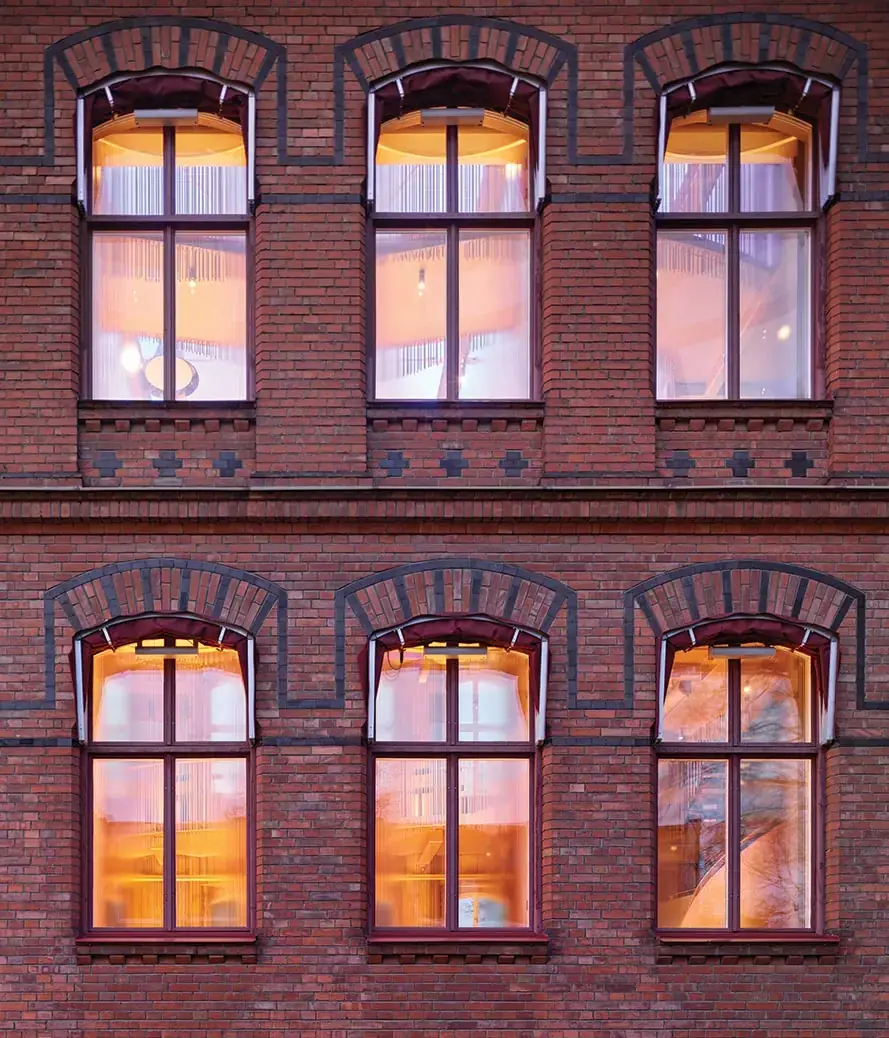
The hall is housed within a brick-faced former orphanage (above), and takes advantage of a large volume in its central wing (top of page). Photo © Roland Halbe, click to enlarge.
Translating roughly as “Junior Academy,” Lilla provides schooling and music training for children, adolescents, and young adults. It is housed in a former orphanage on the edge of Stockholm’s historic center, a finely detailed 19th-century brick-and-stone complex belonging to Ramsbury Property, whose owner, clothing magnate Stefan Persson (former chairman of and largest stakeholder in retail giant H&M), was the $15 million concert hall’s chief benefactor, as well as Palù’s direct client. In addition to school performances and rehearsals, the auditorium, named for the reigning Swedish queen, was intended for use by the O/Modernt Chamber Orchestra and Festival, founded by Lilla’s deputy artistic director, Hugo Ticciati, in 2011.
“When Yasuhisa and I first visited the site together, in 2015, the school had already decided where in the complex the concert hall should go,” recalls Palù. “For me, their choice was a complete mistake—small, with a low ceiling. So I suggested they change the location to do something much more special.” Lilla’s directors had selected one of the former orphanage’s smaller C-shaped blocks for the hall, and were proposing to install it in a short lateral wing; Palù proposed moving it to the main, central wing, where it would benefit from far more space inside a shoebox volume similar to Cremona’s. “In terms of dimensions, the two halls are alike, but their configuration is completely different,” he continues. “Cremona, which has an audience capacity of 485, was designed for chamber performances of 35 to 40 musicians. In Stockholm, where audience capacity is 300, the school needed to accommodate orchestras of up to 120 musicians, as well as a choir.”
An obvious precedent was Vienna’s celebrated Musikverein (Theophil Hansen, 1870), a shoebox hall that places the orchestra on a stage at one end, and is considered a reference by many acousticians, among them Nagata. But, seeking greater audience immersion along the lines of Hans Scharoun’s equally celebrated Berliner Philharmonie (1963), Palù decided to place the orchestra at the center, with the audience in raked seating on either side of the “stage” (in fact a clearing in the middle) or standing, leaning, or sitting in the two levels of balconies above. “I call it a democratic space, because there are no barriers,” he says. When a very large orchestra and choir are programmed, singers and musicians perform from the balconies, making for a particularly enveloping listening experience.
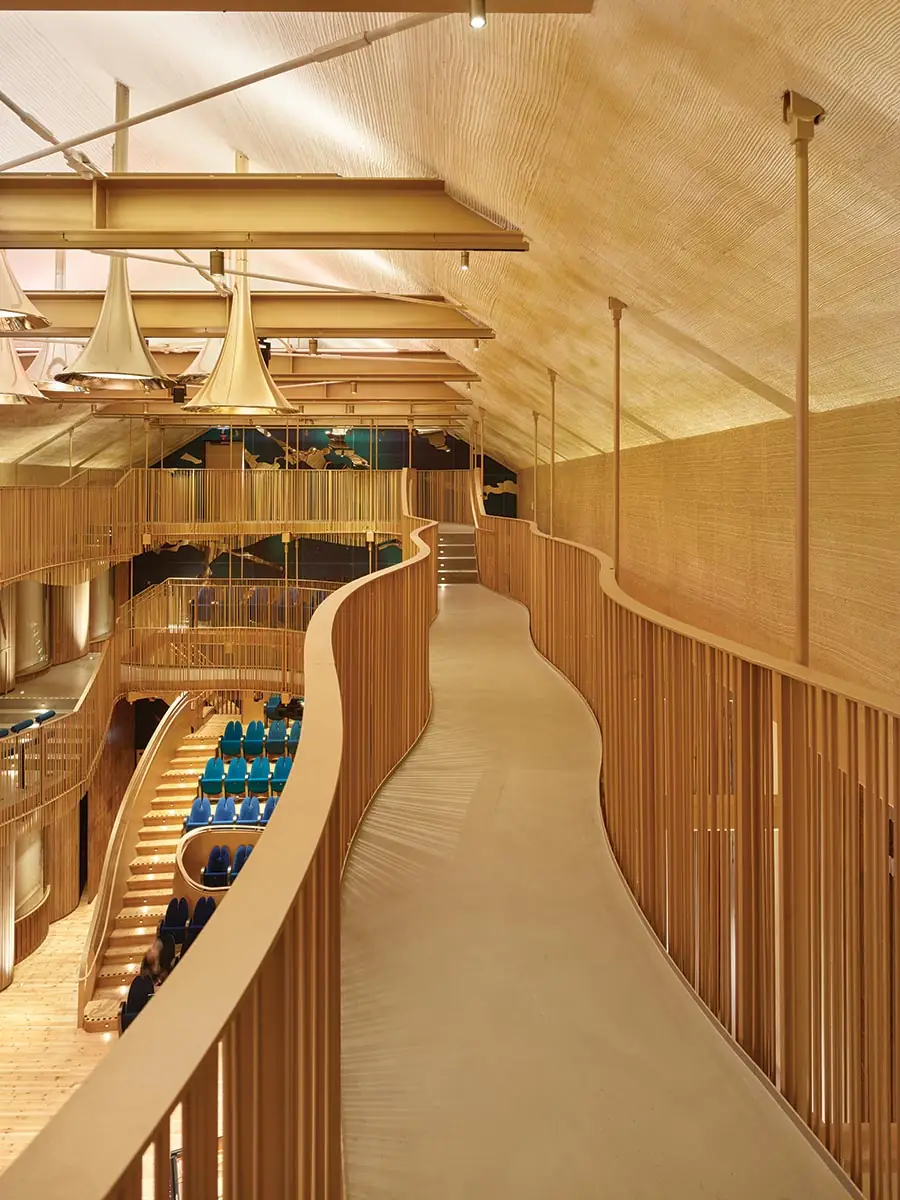
1
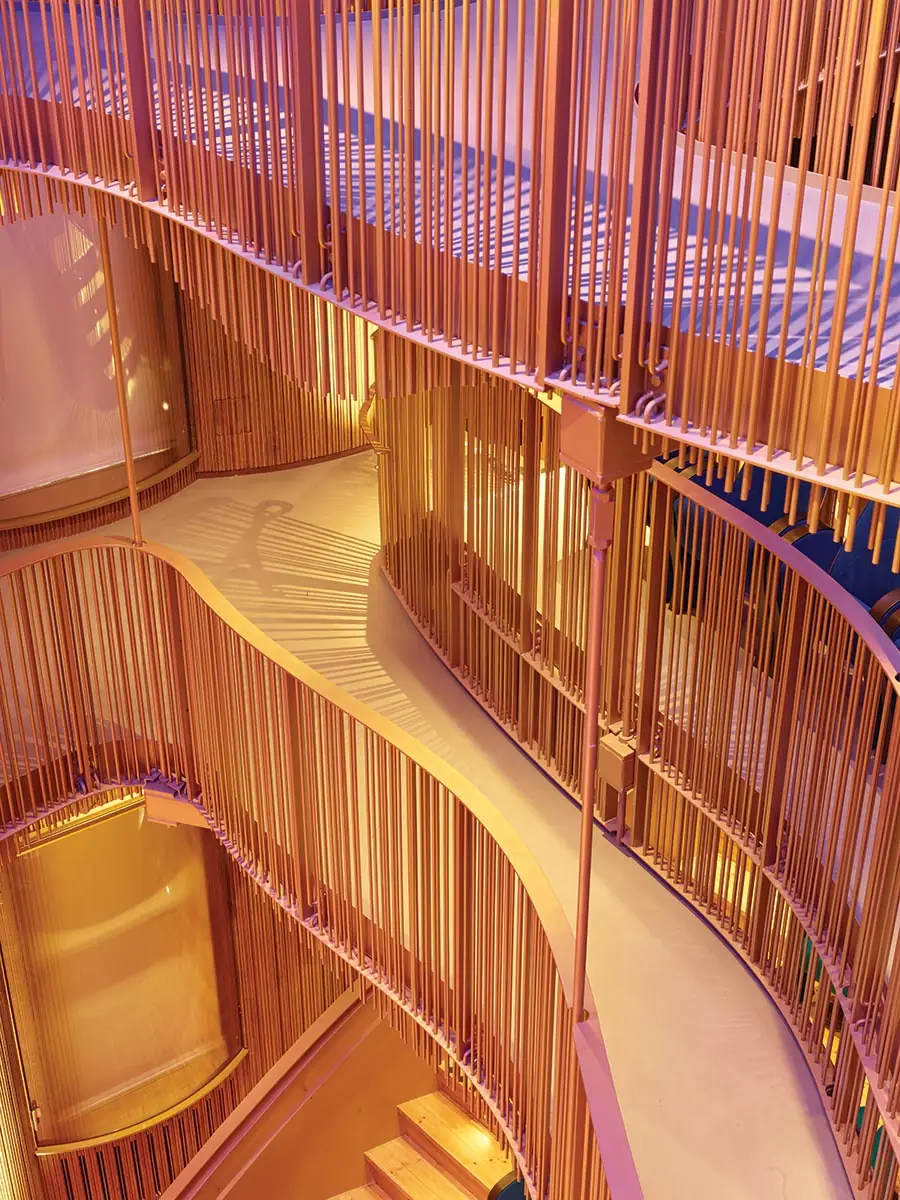
2
Curving balconies interweave (1 & 2). Photos © Roland Halbe
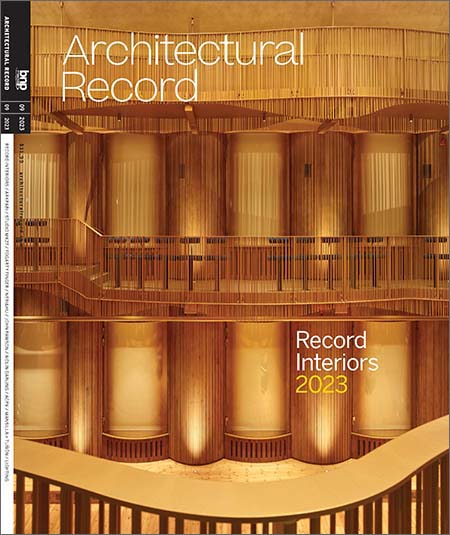
Photo © Roland Halbe
To build his design, the central wing was gutted, its walls reinforced with concrete (which also provided the required acoustic mass), and its roof rebuilt in steel, with lateral-span I-beams from which the sinuous upper balcony is partly suspended. Palù imagined a promenade architecturale whereby the audience enters from a side foyer on level 3, itself an intimate performance room, and descends via the balconies and their interlinking stairs, “breathing in the hall’s spatial atmosphere” on the way—although it can be entered at any level, and in school hours connects the two lateral wings. In the interests of both acoustics and “a continuous concert of organic and fluid shapes,” Palù paid particular attention to the surfaces—curved panels of pine slats on the long walls, finished in the same varnish as Cremona violins; soft Scots pine for the orchestra floor; film-covered curved-glass panels in front of the historic windows, violin-colored at the sides and transparent in the middle; and a striated plaster ceiling that fades from varnish tones at the bottom to white at the top, since programmable LEDs offering every imaginable hue are directed onto it during performances, with colors chosen to match the mood of the music. Trumpet-shaped polished-steel pendants light the stage area, while the balconies’ steel railings and the undersides of their concrete floors are painted golden bronze, so that everything merges in a symphony of mellow ormolu.
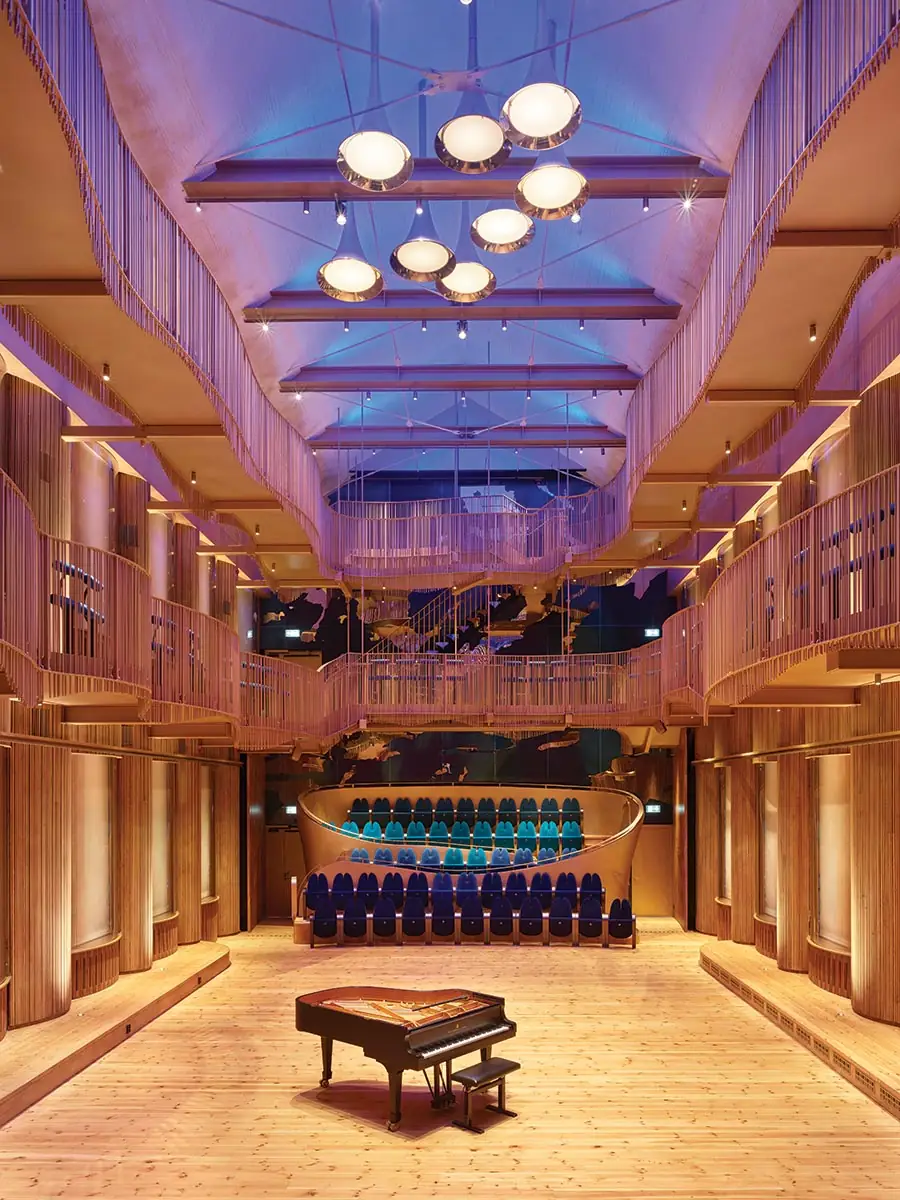
3
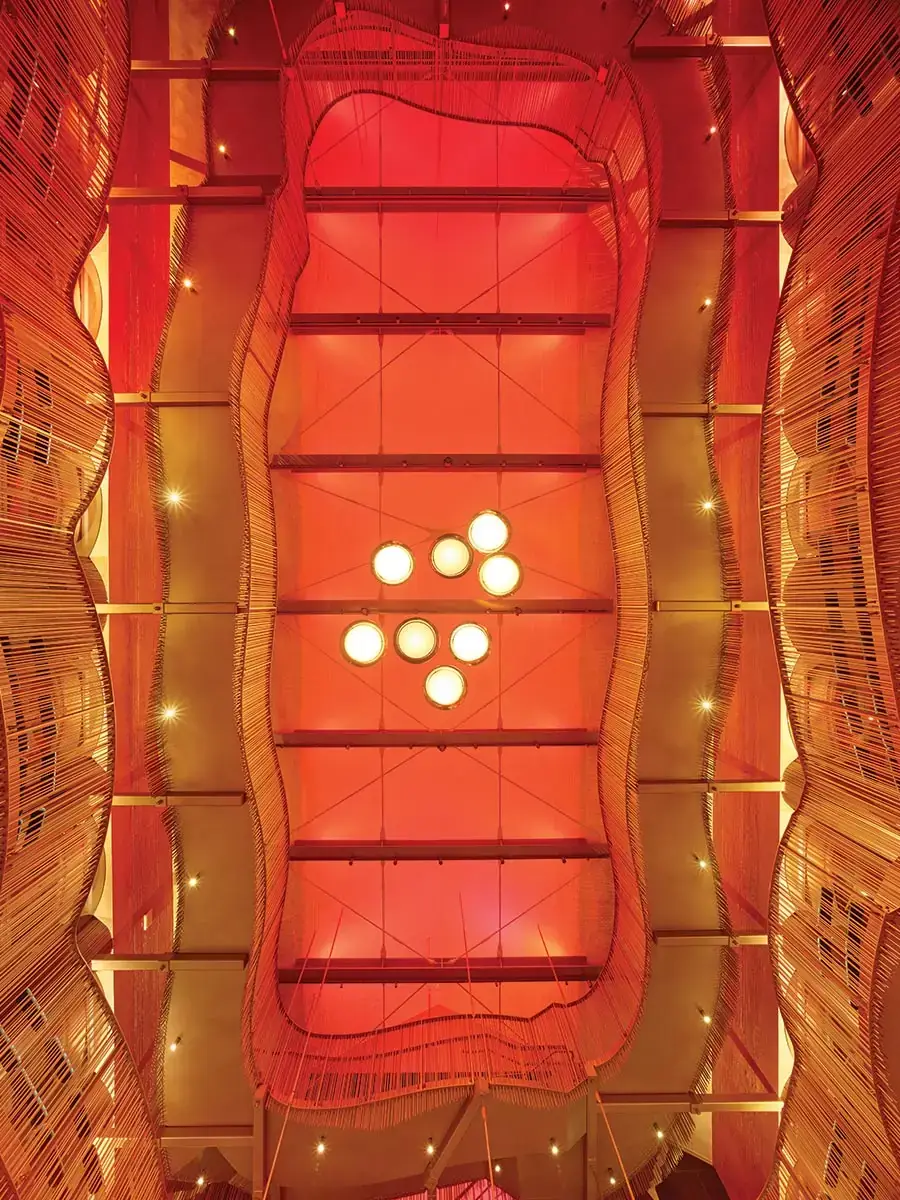
4
Trumpet pendants hang over the stage (3), while LEDs color the space (4). Photos © Roland Halbe
“My dream was to create an undefined hybrid of music, sculpture, and architecture,” explains Palù, who allowed himself a dash of contextual contrast on the shorter lateral walls: brass-colored maps of the Stockholm archipelago set against a deep blue background at one end and dark green at the other. After the bijou intimacy of the Giovanni Arvedi and Queen Silvia auditoria, he is now pursuing a change in scale, with a 1,200-seat space planned for his native Italy, as well as a big opera theater currently under construction in Tehran.
Click plan to enlarge
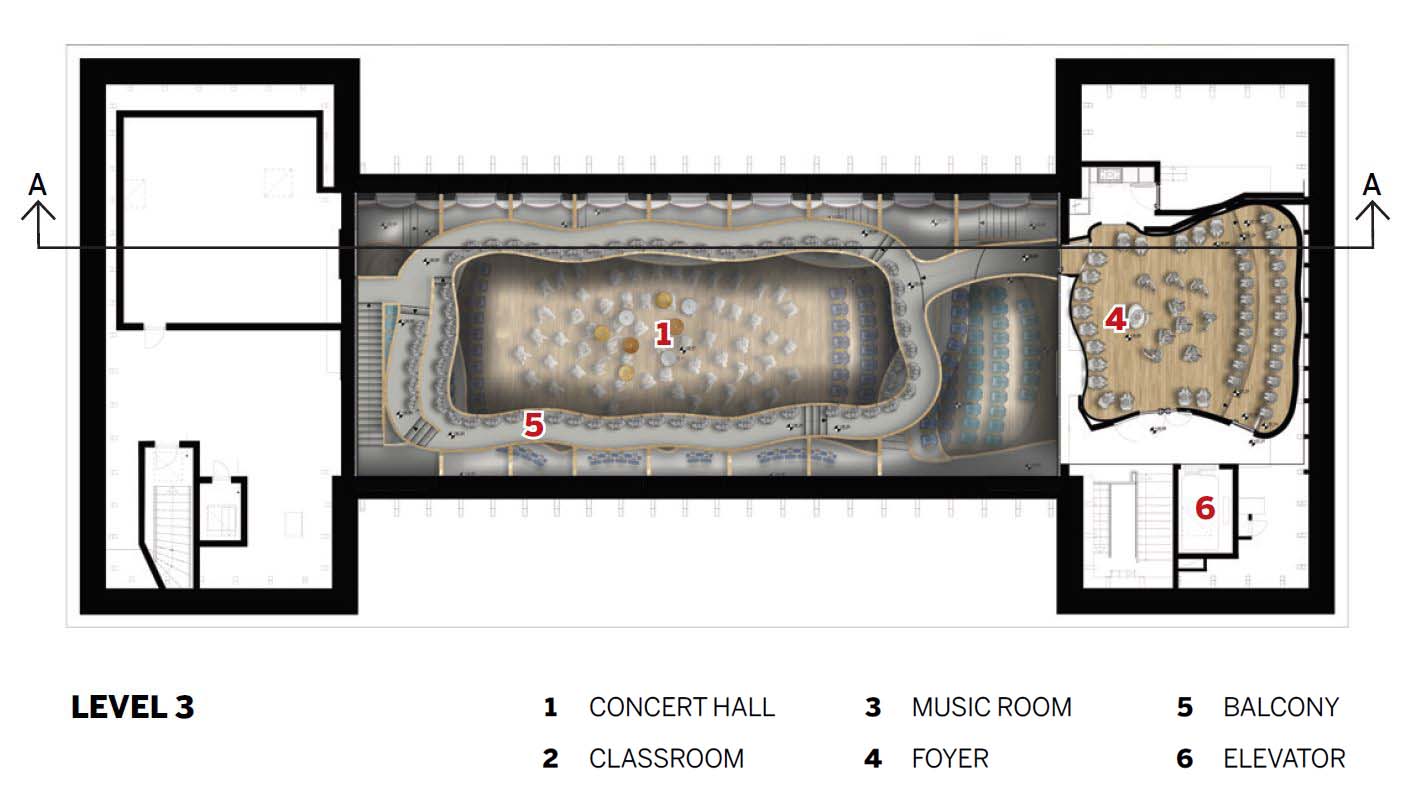
Click section to enlarge
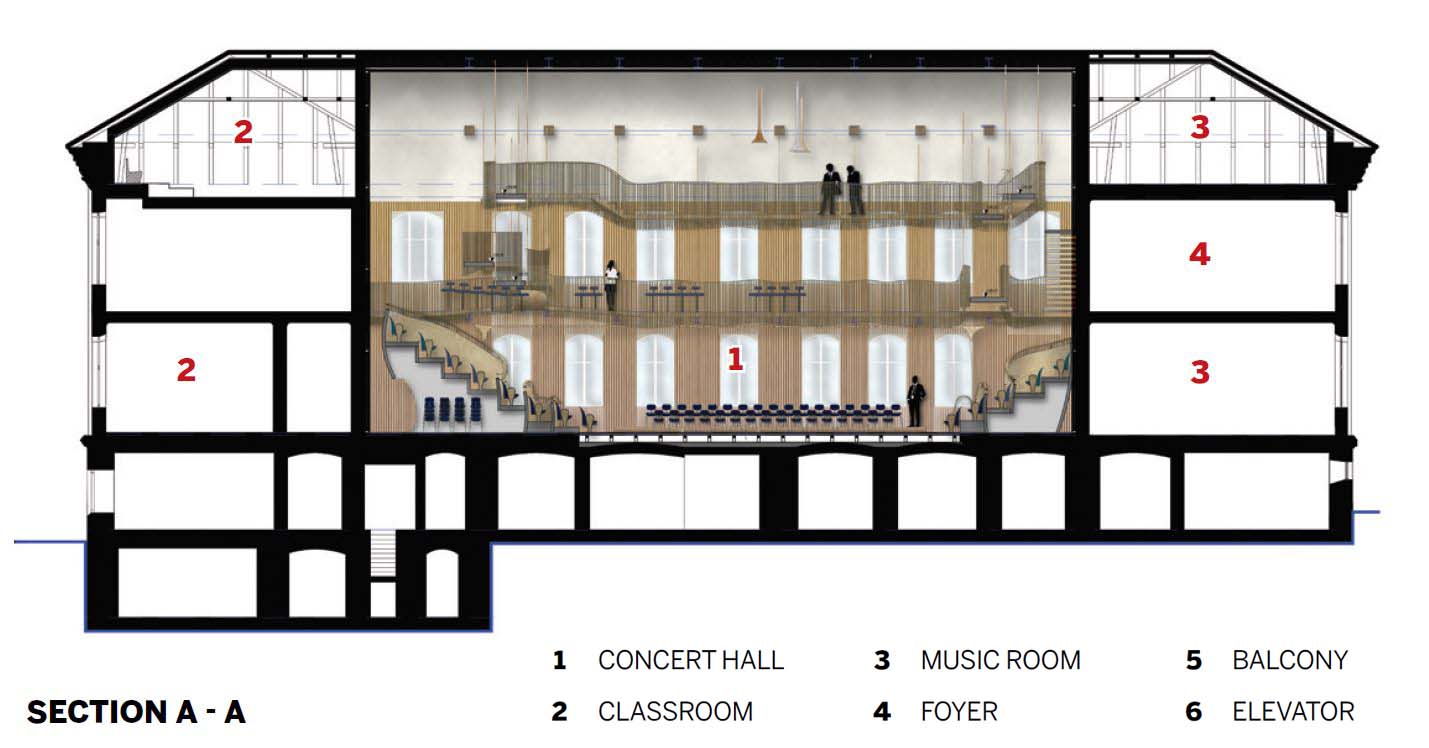
Credits
Architect:
Arkpabi Architecture Studio — Giorgio Palù, principal; Marcello Cesini, Davide Andrea Nolli, Alessandra Dall’Ara, Francesca Gallina, Martina Varoli, Sara Cavazzoni (design team)
Engineers:
Geosigma Konstruktion (structural); Notos Consult (mechanical/plumbing)
Consultants:
Nagata Acoustics (acoustics); Light Bureau Limited (lighting)
General Contractor:
NCC
Client:
Stefan Persson
Size:
3,015 square feet
Cost:
$15 million
Completion Date:
June 2022 (inauguration)
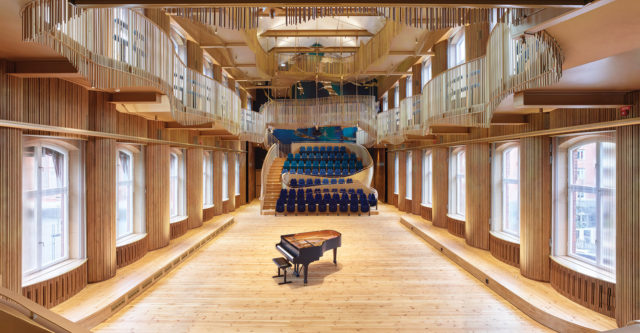



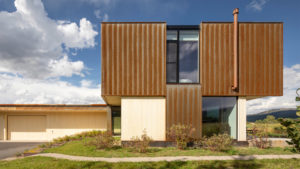
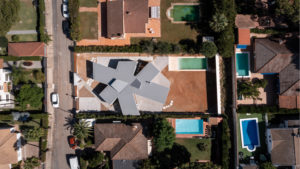
.jpg?height=300&t=1713468361&width=300)
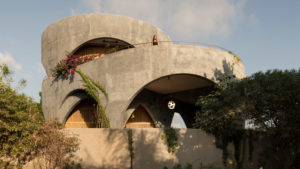
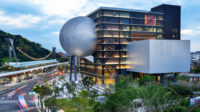
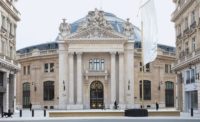
Post a comment to this article
Report Abusive Comment